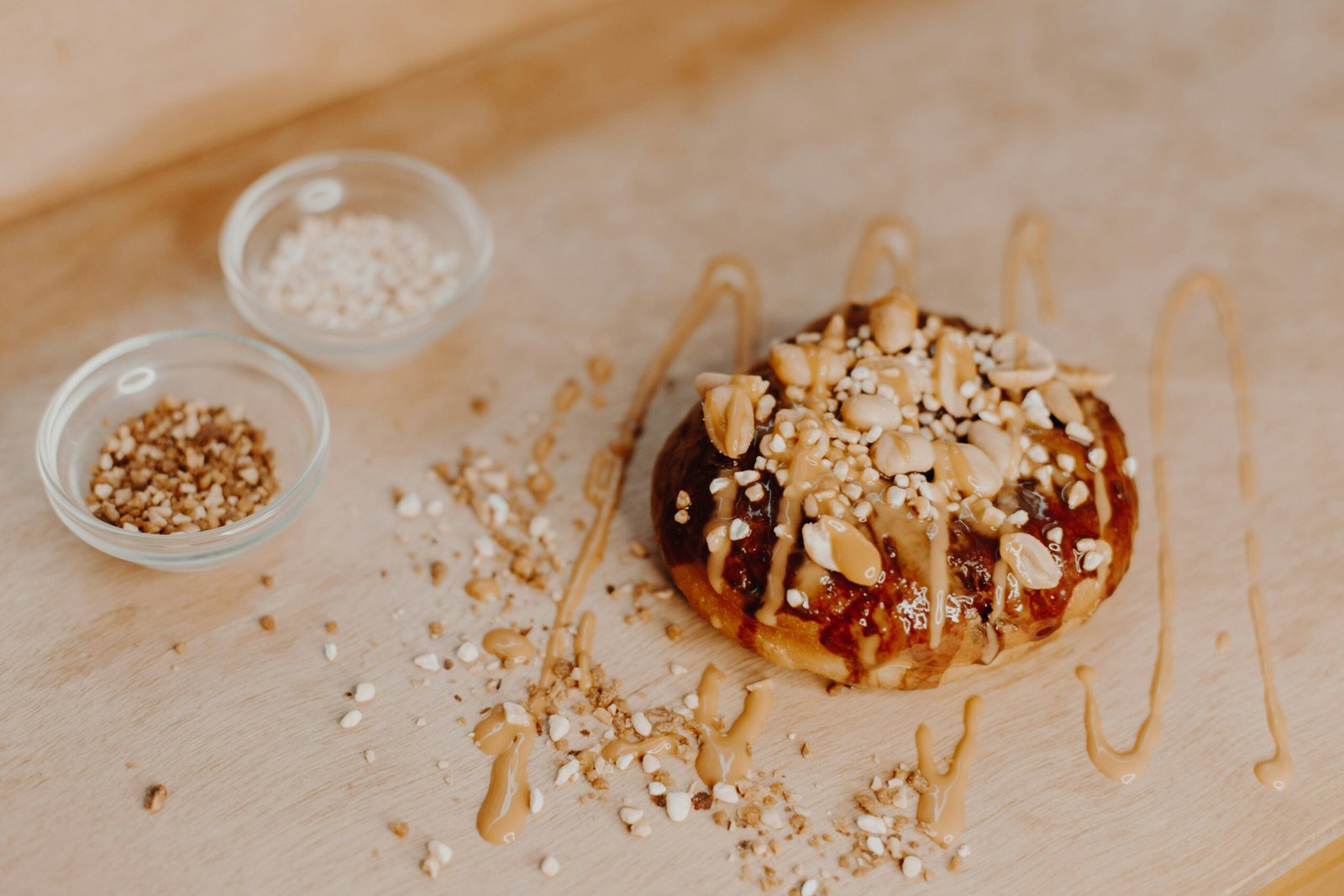Introduction to Meal Prep
Meal preparation, commonly referred to as meal prep, is a strategy involving the planning and preparation of meals in advance, typically for an entire week. This approach promotes not only convenience but also a healthier lifestyle by simplifying the process of maintaining dietary goals. By dedicating a specific time weekly to batch-cook meals, individuals can ensure they have nutritious options readily available, reducing the temptation to veer off course due to convenience foods.
The benefits of meal prepping are numerous. One of the most significant advantages is the time-saving aspect it offers. With pre-prepared meals, individuals can avoid daily cooking and cleaning, allowing for more time to focus on other activities. This quality makes meal prep particularly appealing for busy professionals and families. Moreover, meal prepping aids in controlling portion sizes and managing caloric intake, which is vital for maintaining a healthy diet. It serves as an effective tool to curb impulsive eating behaviors and fosters a habit of mindful eating.
Additionally, meal prep helps in reducing food waste, as cooking in bulk encourages people to utilize ingredients fully and creatively. This practice promotes sustainability by minimizing excess food consumption while optimizing grocery shopping routines. Furthermore, it aligns with the principles of preparing meals that are balanced and nutritious, reinforcing healthier eating habits.
In this ultimate weekly meal prep guide, we will delve into a variety of healthy recipes tailored for breakfast, lunch, and dinner. With clear and structured guidance, individuals can explore different meal options, ensuring that they enjoy flavorful and nourishing dishes throughout the week. This guide aims to equip readers with the necessary tools to successfully implement meal prep into their lives, improving overall health and wellness.
Essential Tools and Equipment for Meal Prep
Effective meal prep requires the right tools and equipment to streamline the cooking process and ensure that meals stay fresh and well-organized. One of the primary items needed for meal prep is an array of high-quality containers. These containers should ideally be made from glass or BPA-free plastic, as they provide durability and can be microwaved without concern. It is recommended to have various sizes to accommodate different meal portions, including larger containers for bulk meals and smaller ones for snacks or sides.
A reliable food scale is another essential tool that can greatly enhance the meal prep experience. Weighing ingredients can improve the accuracy of portion sizes, enabling individuals to meet their dietary goals more effectively. A digital scale offers precision and can often include additional features such as tare functions, which allow users to weigh their ingredients without including the weight of the container.
Knives and cutting boards are critical for preparing ingredients. A sharp chef’s knife is recommended for general chopping and slicing tasks, while a paring knife is great for delicate work. It is also advantageous to have a sturdy cutting board made from wood or plastic, which provides a safe surface for chopping without dulling the knife edges.
For keeping meals fresh and organized, consider using a rotational system for your storage solutions. Labeling containers with meal names and preparation dates can help maintain awareness of what to consume first. Additionally, investing in airtight containers aids in preserving the quality of food, ultimately preventing waste.
Lastly, organizing your meal prep kitchen can greatly improve efficiency. Designating specific areas for cutting, cooking, and storing food can create a streamlined workflow. Keeping utensils and tools within arm’s reach will also save time. By equipping oneself with the right tools and setting up an organized workspace, meal prep can become an efficient and enjoyable experience.
Meal Prep Basics: Planning and Shopping
Effective meal prep begins with careful planning, ensuring that meals align with nutritional needs and personal preferences. Start by determining your dietary goals, whether you aim for weight management, increased protein intake, or balanced nutrition. Creating a weekly menu is a helpful step; consider incorporating a variety of ingredients to maintain interest and satisfaction throughout the week. This method also aids in diversifying nutrient intake, which is vital for overall health.
Once a menu is established, the next step is to compile a comprehensive shopping list. Categorize this list based on store sections, such as produce, grains, proteins, and dairy. This approach streamlines the shopping process, saving time and reducing the likelihood of forgetting essential items. For budgeting purposes, look for seasonal produce, which tends to be less expensive and fresher. Additionally, consider purchasing in bulk for non-perishable items, thereby lowering overall costs.
Maximizing the shelf life of ingredients is another crucial aspect of meal prep. Store fresh produce properly; for example, keep leafy greens in airtight containers to prevent wilting. Employing the first-in, first-out (FIFO) method ensures older items are used first, reducing waste. When it comes to proteins, marinating and portioning out servings for the week can make meal preparation easier. Additionally, freezing cooked meals or ingredients extends their usability significantly, ensuring that you always have nutritious options available. This planning and organization not only enhance the meal prep experience but also pave the way for healthier choices throughout the week.
Healthy Breakfast Recipes for Meal Prep
Starting your day with a nutritious breakfast can significantly enhance energy levels and overall well-being. For those engaged in meal prepping, several healthy breakfast options allow for advanced preparation while maintaining flavor and nutritional value. Below are a few recommendations that are both convenient and adaptable to various dietary preferences.
One popular option is overnight oats. To prepare, combine rolled oats with your choice of milk (dairy or plant-based) and add toppings such as fruits, nuts, or seeds. Allow the mixture to soak overnight in the refrigerator. This breakfast can be customized with different flavorings, such as cinnamon or maple syrup, and it remains fresh for up to three days.
Another efficient option features smoothie packs. Pre-portion all smoothie ingredients except for the liquid into freezer-safe bags. Ideal combinations may include spinach, berries, and bananas. In the morning, simply blend the contents with your preferred liquid for a quick, nutrient-rich breakfast. These packs can be stored for up to one month in the freezer, ensuring you have a healthy start on busy mornings.
Egg muffins are another versatile recipe that can cater to various tastes. Whisk eggs and mix in an assortment of vegetables, cheeses, and meats. Pour the mixture into muffin tins and bake until set. Once cooled, these muffins can be refrigerated for up to five days or frozen for longer storage. This option allows for easy modifications to accommodate different dietary restrictions, such as gluten-free or vegetarian preferences.
Lastly, consider chia seed pudding. By mixing chia seeds with milk and leaving the mixture to thicken overnight, you create a creamy, nutrient-dense breakfast. Add flavoring agents like vanilla or cocoa powder, and top with fruits or nuts to enhance the recipe. Chia pudding can remain fresh for about five days, making it a perfect addition to your meal prep.
Lunch Ideas to Prepare Ahead of Time
Preparing healthy lunches in advance is a practical approach that not only saves time but also ensures you have nutritious meals readily available throughout the week. With a focus on variety, there are numerous options for lunch recipes that can be made in large batches, allowing for flexibility in meal planning. Grain bowls, salads, and wraps are popular choices that cater to different tastes and dietary needs.
Grain bowls are a versatile option for a hearty lunch. Start by choosing a base such as quinoa, brown rice, or farro. Top it with a variety of proteins such as grilled chicken, beans, or tofu, along with colorful vegetables like bell peppers, spinach, or roasted sweet potatoes. Drizzle with a dressing or sauce of your choice to add flavor. Preparing individual grain bowls in advance allows for customization and can be enjoyed cold or reheated as needed.
Salads can be a refreshing lunchtime staple, yet maintaining freshness can be challenging. To keep salads vibrant and flavorful throughout the week, consider layering ingredients: place hearty items such as grains and proteins at the bottom, with lighter greens on top. Keep dressing separate until it is time to eat, to avoid sogginess. Recipes can include a Mediterranean chickpea salad with cucumber, tomatoes, and feta, or a vibrant Asian-inspired slaw with shredded carrots, cabbage, and sesame dressing.
Wraps offer yet another convenient option. Fill whole-grain tortillas with protein sources such as turkey, hummus, or falafel, and add a variety of fresh vegetables. Wrap them tightly in foil or parchment paper to maintain freshness. Preparing a selection of wraps at the beginning of the week allows for diverse lunches that can be easily transported. With these ideas, your weekly meal prep for lunches can be both satisfying and healthy, enabling you to make mindful choices every day.
Dinners Designed for Meal Prep
When it comes to meal prepping, dinners play a crucial role in maintaining a healthy diet throughout the week. Opting for easy and healthy dinner recipes can simplify your cooking process while ensuring you receive balanced nutrition. Meals that consist of baked proteins, roasted vegetables, and one-pot dishes are especially suitable for meal prep, providing both convenience and flavor.
Begin with baked proteins such as chicken breasts, salmon, or tofu. These proteins can be marinated or seasoned according to your preferences and then cooked in bulk. Once prepared, portion them into individual containers, ensuring they are appropriately cooled before sealing. This step helps maintain freshness when stored in the refrigerator or freezer. Try pairing baked proteins with a variety of roasted vegetables, including bell peppers, zucchini, and carrots. Roasting enhances their flavor while retaining essential nutrients, making them an excellent side dish. Allow the vegetables to cool before adding them to your pre-portioned meals.
One-pot meals also offer a delightful solution for efficient meal prepping. Dishes like chili, curry, or stir-fries can be made in larger quantities and stored for later consumption. Select ingredients that reheat well and pair them with grains such as quinoa or brown rice, which serve as a robust base for your meal. After cooking, divide the one-pot meal into weekly servings, allowing for versatility in your nightly options. It is essential to label containers with dates and contents to ensure optimal rotation of meals, preventing waste and ensuring you enjoy the freshest options available.
By incorporating these meal prep strategies into your weekly routine, you can create delicious, healthy dinners that are ready to enjoy throughout the week. This approach not only saves time but also reduces the temptation to opt for less healthy alternatives when hunger strikes. Experimenting with various flavors and ingredients can enhance your meal prep experience, ensuring that dinner remains an anticipated event rather than a rushed afterthought.
Snacks and Sides for a Balanced Diet
Incorporating healthy snacks and sides into your weekly meal prep can significantly enhance your diet, ensuring you maintain energy levels throughout the day. Having nutritious options readily available not only complements your main meals but also helps curb hunger between them, thereby promoting a balanced diet.
One excellent option for a healthy snack is energy balls. These bite-sized snacks are incredibly versatile and can be made using a variety of ingredients, such as oats, nut butter, seeds, and dried fruits. Simply mix these ingredients, roll them into small balls, and refrigerate. They make for a convenient snack that is rich in protein and healthy fats, providing the necessary energy boost during busy days.
Another nutritious snack choice is veggie sticks paired with hummus. Fresh vegetables like carrots, cucumbers, and bell peppers can be cut into sticks and stored in the refrigerator for easy access. Hummus, made from blended chickpeas, tahini, and lemon juice, offers a creamy and flavorful dip that adds an extra layer of nutrition. This combination not only satisfies your cravings but also supplies essential vitamins and minerals.
Fruit salads are an additional healthy side option that can brighten up any meal. Mixing a variety of seasonal fruits provides a refreshing and naturally sweet complement to your dishes. Not only do they add color and vibrancy to your plate, but they are also packed with antioxidants and are low in calories, making them an ideal choice for maintaining a balanced diet.
Incorporating these simple snacks and sides into your meal planning can lead to improved dietary habits. Having healthy options available helps you make better choices, keeping cravings at bay and ensuring that you remain energetic throughout your daily routine.
Tips for Storing and Reheating Meals Safely
Food safety is paramount when it comes to storing and reheating meals. To prevent foodborne illnesses, it is essential to adhere to proper cooling and storage methods. First and foremost, cooked meals should be cooled quickly to reduce the risk of bacterial growth. Aim to refrigerate or freeze meals within two hours of cooking. For optimal cooling, divide large portions into smaller, shallow containers, allowing the food to cool evenly and rapidly.
Labeling stored meals is another critical practice. Always include the date of preparation on the container to monitor how long the food has been stored. This practice can help ensure that meals are consumed within the recommended storage times: typically, cooked meals can be safely stored in the refrigerator for up to three to four days, while frozen meals can last for three to six months. It is advisable to be cautious with certain items; for instance, seafood and cooked poultry should be consumed within a shorter time frame to mitigate risks.
Reheating meals correctly is just as important as proper storage. When reheating pre-prepared meals, ensure that the food reaches an internal temperature of 165°F (74°C) to effectively kill any potential bacteria. Use a food thermometer for accuracy. Additionally, when reheating, avoid using the microwave alone for thorough heating; consider using the oven or stovetop to ensure even heating. Stir or rotate meals halfway through reheating to ensure all portions reach the required temperature.
In summary, adopting safe food storage and reheating practices is essential in meal prep. These guidelines facilitate not only the preservation of meal quality but also the safeguarding of health, ensuring that your healthy eating habits remain a priority without compromising safety.
Conclusion: Embracing Meal Prep for a Healthier Lifestyle
Incorporating meal prep into your weekly routine can significantly enhance your overall wellness and streamline your culinary efforts. The practice not only fosters healthier eating habits but also saves time and reduces stress amid busy schedules. By planning and preparing meals in advance, individuals can ensure they are fueling their bodies with nutritious options rather than succumbing to the convenience of fast food or unhealthy snacks.
Meal prep can profoundly impact dietary choices. When you dedicate time to create wholesome breakfasts, lunches, and dinners ahead of time, you are more likely to consume balanced meals that provide the necessary nutrients. This proactive approach enables you to control portion sizes, select high-quality ingredients, and experiment with flavors—all of which can promote a more varied and enjoyable diet.
Moreover, engaging in meal preparation cultivates a sense of accomplishment and discipline. As you familiarize yourself with the process, you may discover a newfound appreciation for cooking and the opportunity to unleash your culinary creativity. To make meal prep an enjoyable experience, consider allocating a specific day to shop for ingredients, cook, and store meals. Involve family or friends to share the responsibility and transform it into a social activity that can strengthen bonds while achieving health goals.
It is essential to acknowledge that transitioning to a meal prep lifestyle can take time and practice. Start with simple recipes and gradually incorporate more diverse dishes as your confidence grows. Finally, we invite you to share your meal prep experiences, innovative recipes, and personal tips with others in the community. By exchanging knowledge and inspiration, you can foster a supportive environment that promotes healthier living through meal preparation.










